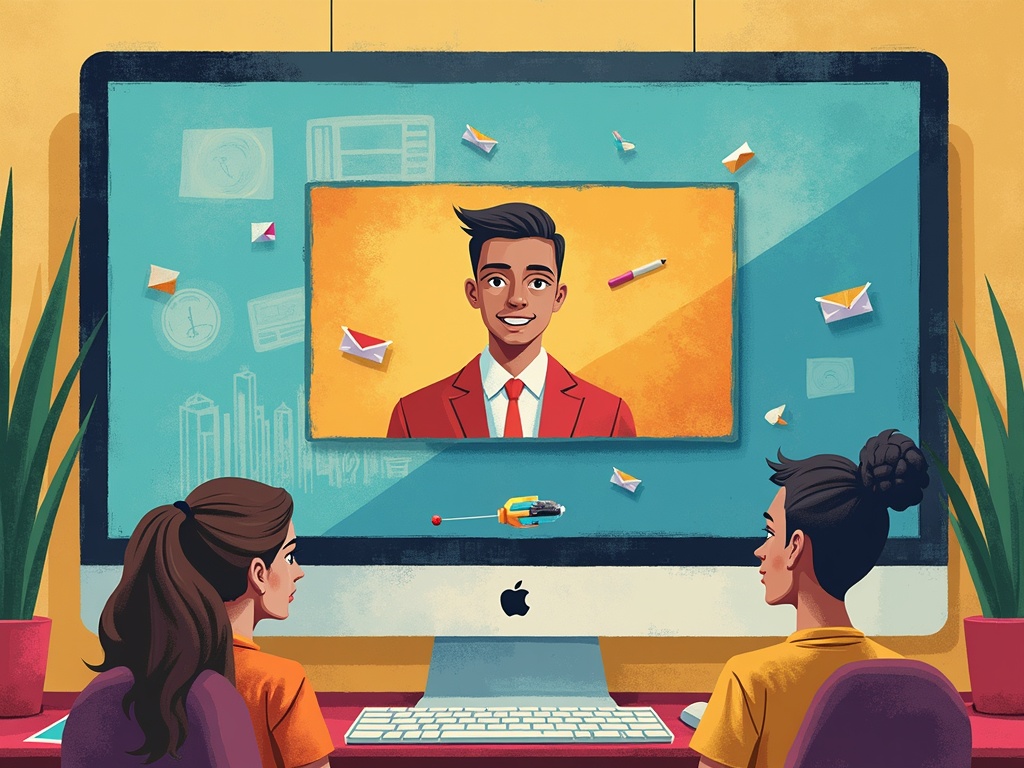How to Get Over the Fear of Being on Video: Conquer the Camera and Unleash Your Potential
The blinking red light. It can be paralyzing. A symbol representing the daunting task of putting yourself out there, exposed and vulnerable, to the judgment of the internet. You have valuable insights, a compelling story, a product that solves a problem, but the fear of being on video holds you captive. You’re not alone. Millions grapple with camera shyness. But the good news? This fear is conquerable. This guide provides a roadmap to overcome your anxieties and confidently embrace the power of video.
Understanding the Roots of Your Video Fear
Before tackling the solutions, let’s dissect the problem. What exactly fuels this fear? Usually, it’s a cocktail of several interconnected anxieties:
- Fear of Judgment: This is often the biggest culprit. The worry about being perceived as awkward, unintelligent, or unattractive on camera looms large. We imagine harsh critiques of our appearance, voice, or message.
- Perfectionism: The relentless pursuit of flawlessness can be crippling. The pressure to deliver a perfect performance, free of stumbles and ums, creates immense stress.
- Self-Consciousness: Being acutely aware of your appearance and mannerisms amplifies anxiety. Every gesture, facial expression, and vocal inflection feels scrutinized.
- Lack of Confidence: Doubting your expertise or the value of your message can undermine your willingness to step in front of the camera. You might question whether anyone will even care about what you have to say.
- Technical Anxiety: Worrying about equipment malfunctions, poor lighting, or audio issues can add to the overall stress. The technical aspects of video creation can feel overwhelming.
- Fear of the Unknown: The internet can feel like a vast, unpredictable space. Uncertainty about who will see your videos and how they will react breeds anxiety.
Acknowledging these underlying fears is the first step toward dismantling them. Recognize that these anxieties are common, valid, and, most importantly, manageable.
Practical Strategies for Conquering Camera Shyness
Now, let's move on to actionable strategies you can implement to overcome your fear and confidently embrace video. These tips are designed to address the root causes of your anxiety and build your on-camera confidence, transforming you from a camera-shy novice to a comfortable and engaging video creator.
1. Start Small and Practice Consistently
Don't jump into creating elaborate productions right away. Begin with small, manageable steps to gradually acclimatize yourself to being on camera.
- Record Yourself in Private: Start by recording short videos of yourself talking about everyday topics. Describe your day, review a book, or simply ramble about your thoughts. The goal is to get comfortable seeing and hearing yourself on video without the pressure of an audience.
- Practice with Friends or Family: Ask a trusted friend or family member to be your audience. This allows you to practice your delivery and receive constructive feedback in a safe and supportive environment.
- Create Short Social Media Stories: Platforms like Instagram and Snapchat offer low-pressure environments for experimenting with video. The ephemeral nature of stories can alleviate some of the anxiety associated with creating permanent content.
Consistency is key. The more you practice, the more natural and comfortable you'll become on camera. Treat it like learning a new skill – the more you do it, the better you'll get.
2. Prepare and Plan Your Content
A lack of preparation often exacerbates anxiety. Knowing what you want to say and how you want to say it can significantly boost your confidence.
- Write a Script or Outline: Don't wing it! Create a detailed script or a comprehensive outline that covers all the key points you want to address in your video. This will help you stay focused and avoid rambling.
- Rehearse Your Delivery: Practice your script or outline several times before recording. This will help you internalize the material and deliver it more naturally.
- Prepare Your Environment: Choose a quiet, well-lit space for recording. Make sure your background is clean and free of distractions. Having a professional and comfortable environment can boost your confidence.
3. Focus on Your Audience and Your Message
Shift your focus from yourself to your audience. Remember why you're creating the video in the first place. You have valuable information, insights, or entertainment to offer. Concentrate on delivering that value to your viewers.
- Identify Your Target Audience: Who are you trying to reach with your video? Understanding your audience will help you tailor your message and delivery to their needs and interests.
- Focus on Providing Value: Think about how your video will benefit your viewers. Will it educate them? Entertain them? Inspire them? Focus on providing real value, and your anxiety will diminish.
- Imagine You’re Talking to a Friend: Visualise a friendly face as you’re speaking. This can help soften your delivery and make you feel more relaxed and conversational.
4. Embrace Imperfection and Learn From Your Mistakes
Perfection is the enemy of progress. Accept that you're not going to be perfect on camera, especially in the beginning. Embrace imperfection as a part of the learning process.
- Don't Strive for Perfection: It's okay to make mistakes. It's okay to stumble over your words. It's okay to have a few ums and ahs. Audiences are generally forgiving and appreciate authenticity.
- Learn from Your Mistakes: After recording a video, review it critically. Identify areas where you can improve, but focus on learning rather than dwelling on your perceived flaws.
- Edit Strategically: Use editing software to remove major mistakes or awkward pauses. However, don't over-edit your videos to the point where they look unnatural. A few minor imperfections can make you seem more relatable.
5. Practice Self-Compassion and Positive Self-Talk
Be kind to yourself. Replace negative self-talk with positive affirmations. Recognize that you are capable and that you deserve to succeed.
- Challenge Negative Thoughts: When you catch yourself thinking negative thoughts about your appearance or performance, challenge those thoughts. Ask yourself if they are truly accurate and helpful.
- Practice Positive Affirmations: Repeat positive statements to yourself, such as I am confident on camera, I have valuable information to share, or I am getting better with each video I create.
- Celebrate Your Progress: Acknowledge and celebrate your accomplishments, no matter how small. Every video you create is a step forward in overcoming your fear.
6. Address Technical Anxiety
Sometimes, the fear of being on video stems from a lack of technical knowledge or fear of equipment malfunction.
- Learn the Basics of Video Equipment: Understand how your camera, microphone, and lighting work. There are numerous online tutorials and resources available to help you learn the fundamentals of video equipment.
- Test Your Equipment Before Recording: Always test your equipment before you start recording to ensure that everything is working properly. This will help you avoid technical glitches during your recording session.
- Keep it Simple: You don't need expensive equipment to create great videos. Start with basic equipment and gradually upgrade as your skills and confidence grow. A smartphone and good lighting can be a great starting point.
7. Consider Professional Help
If your fear of being on video is severe and significantly impacting your life, consider seeking professional help from a therapist or counselor. They can provide you with tools and strategies to manage your anxiety and build your confidence.
Beyond Fear: Embracing the Power of Video
Overcoming the fear of being on video is not just about conquering anxiety; it's about unlocking your potential. Video is a powerful tool for communication, connection, and self-expression. By embracing video, you can:
- Reach a Wider Audience: Video allows you to connect with people all over the world.
- Build Your Brand: Video helps you establish yourself as an expert in your field and build a strong brand identity.
- Share Your Story: Video provides a compelling medium for sharing your story and connecting with others on an emotional level.
- Promote Your Products or Services: Video is a highly effective way to showcase your products or services and attract new customers.
- Boost Your Confidence: Overcoming your fear of being on video will boost your overall confidence and empower you to pursue your goals.
Final Thoughts: Your Video Journey Starts Now
The journey to overcoming the fear of being on video is a marathon, not a sprint. Be patient with yourself, celebrate your progress, and remember that everyone starts somewhere. Embrace the challenge, focus on providing value to your audience, and let your personality shine. The world is waiting to hear your voice and see your story. So, take a deep breath, turn on the camera, and unleash your potential.

